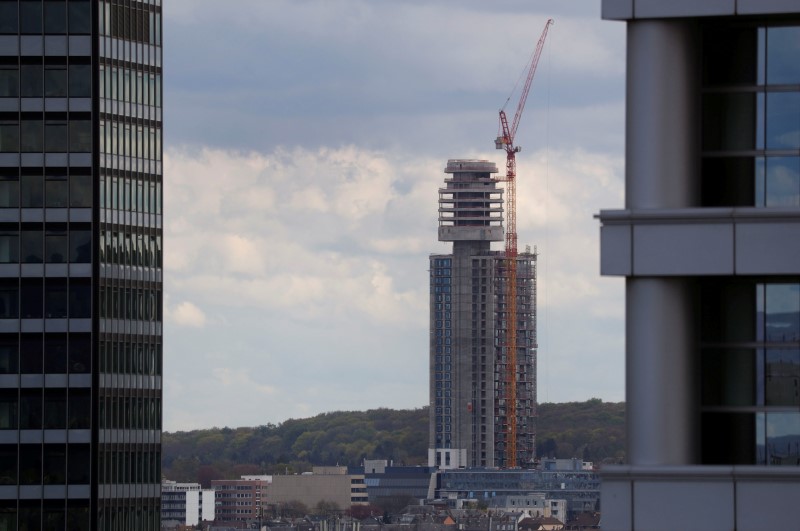By Michael Nienaber
BERLIN (Reuters) - The number of residential building permits granted in Germany jumped by nearly a third to over 84,000 in the first three months of 2016, data showed on Friday, boosting expectations that construction will continue to support growth in Europe's largest economy.
The Federal Statistics Office said authorities issued permits for 72,335 new residential buildings and approved construction work at 12,454 existing buildings.
Approvals for the 'hostel residences' sub-category of homes, which also includes shelters for refugees and asylum seekers, more than doubled to 5,149.
The total of 84,789 marked an increase of 31 percent on the year. It was the highest number of approvals granted in a first quarter since 2004, showing that last year's positive trend in the construction sector is extending into 2016.
In 2015, the number of residential building approvals rose to nearly 310,000, the highest in 15 years. Still experts say that at least 350,000 new homes are needed every year until 2020 to tackle a drastic shortage of affordable housing, aggravated by a record influx of refugees.
Even before the refugee numbers started to increase last summer, there was an estimated lack of 800,000 affordable flats in urban areas. With demand outstripping supply, property prices and rents have soared in cities like Berlin, Hamburg and Munich.
In addition, record-low borrowing costs are encouraging many Germans to overcome their traditional aversion to buying their own flats and houses, with some also regarding property as an attractive investment.
Higher spending on social housing and special tax incentives for investors who build flats in urban areas are expected to give the construction sector an additional push this year.
Construction accounts for 4 percent of German gross domestic product (GDP) and, with 2.5 million people working in more than 300,000 companies, it is a major employer.

The booming construction sector is currently one of the main growth drivers in Germany. In the first three months of 2016, construction investment was one of the biggest growth contributors while net foreign trade was a drag.